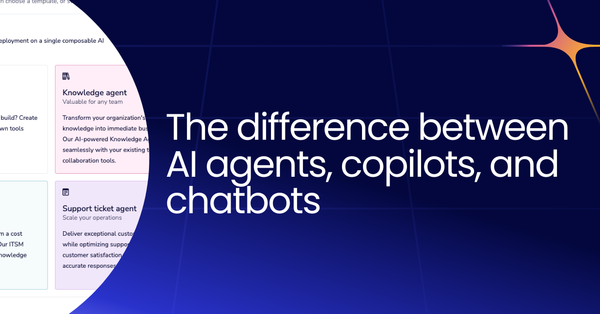“Align. Reinvent. Win”
That was the theme of this year’s Forrester B2B Summit where thousands of marketing, sales, and product professionals gathered to get the latest insights on buyer journey orchestration, AI strategies, evolving go-to-market approaches, and more.
The Tray team was there to show how RevOps teams are increasingly leveraging low-code automation platforms, like Tray, to not only keep up with a rapidly evolving business landscape, but to:
- Act as true change agents for their organizations
- Break down the silos between their people, process, and tools
- Create a differentiated customer experience that stands out in an increasingly noisy world
We spoke to MOPs leaders, tired of feeling trapped by their MAPs, about the benefits of the composable martech stack. We discussed how this innovative approach to managing the lead lifecycle helps them to dramatically reduce lead response times, improve the quality of their sales-ready leads, and reduce friction for the ICPs that matter most to their business.
We spoke to Sales Operators who are looking to automation to help field teams prioritize their time by leveraging intent signals. This reduces the manual effort required to identify the right buying teams, enabling easier multi-threading into ICP accounts.
We spoke with Success leaders looking to reduce the operational costs of servicing customers by infusing their support processes with AI models trained on their own content.
There’s so much innovation happening right now in the RevOps world. Many people we spoke to at the Forrester B2B summit were excited about these innovations and were looking to learn from one another by sharing ideas as to where we’re headed.
Given just how innovative many of these ideas are, we don’t blame those who might be feeling like they’re starting to get left behind! But don’t you worry – we’re here to help keep you up to date and make sure you’re getting the straight dope.
Ok - enough preamble! Let’s check out some of the incredible speakers we heard from and recap the insights and predictions around the future of B2B tactics.
Here’s what we learned:
1. Generational shifts demand new strategies
We’re in the midst of a significant shift in buyer demographics and it’s seriously shaking things up. As Amy Hayes highlighted in her keynote, a staggering 71% of B2B decision-makers are now 45 years of age or younger—a number expected to rise above 75% by 2025.
According to research, 85% of younger buyers are dissatisfied with the current buying process, and are three times more likely to experience stalls in purchase decisions, often struggling to build internal consensus within larger, more complex buying committees. Additionally, they exhibit a 25% higher sensitivity to risk, reflecting a heightened fear of making poor decisions.
So what does this mean for you? Companies must reinvent their approach to the buyer journey to meet these evolving expectations. Tomorrow’s winners will be those that deliver a fast, personalized, and trustworthy buying experience.
2. Become obsessed with your customers
Amy Bills delivered her keynote “Actions Speak Louder Than Words: What Customer-Obsessed Companies Do Differently” and shared compelling evidence that customer-obsessed companies grow significantly faster by genuinely centering their strategies around the customer. Bills detailed four key behaviors that characterize customer-obsessed firms: being truly customer-led, insights-driven, fast in response, and highly connected internally to maximize customer value.
So what does this mean for you? Companies must strive to not only respond to customer needs but anticipate them, ensuring every interaction adds value and fosters loyalty.
3. Rethink go-to-market approaches
As buyer behaviors evolve, so too must our go-to-market (GTM) strategies. Katie Fabiszak emphasized the importance of designing GTM playbooks that are not only tailored to individual organizational needs but also deeply collaborative. These playbooks should focus on delivering a superior, integrated buyer experience by addressing common challenges such as isolated functional team efforts and generic engagement strategies.
So what does this mean for you? The modern lead funnel spans multiple channels, applications, and teams. To quickly and effectively move leads from inbound to engaged, companies must create a highly integrated and automated lead lifecycle process.
4. Revenue transformation Is non-negotiable
The urgency to transform revenue strategies is undeniable, as emphasized by Amy Hawthorne and Rick Bradberry. Their keynote underscored the disconnection between current GTM practices and the evolving needs of business buyers.
Over the last two decades, buyer behavior and technology have advanced dramatically, yet GTM teams often still rely on outdated methods and systems. Modern buyers are savvy enough to see through this, and are naturally distrustful of the traditional buyer journey.
So what does that mean for you? Providing genuine value to the buyer enhances revenue potential. Companies must focus on transforming their processes to align better with customer-centric, digital-first approaches, where buyers are engaged right away through personalized experiences.
Innovation is continuous
The summit itself was a reminder that innovation isn’t a one-time thing but a continuous journey. At Tray.ai, we’re committed to staying ahead of the curve, constantly evolving our offerings to meet the tomorrow’s B2B challenges today.
The Forrester B2B Summit has left us invigorated and more aligned than ever with the needs of modern businesses. We're excited to put these insights into action, helping our customers navigate these changing times with agility and confidence. Thank you for engaging with us at the summit, and we look forward to continuing our journey together.




